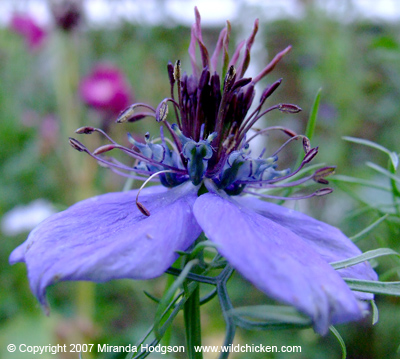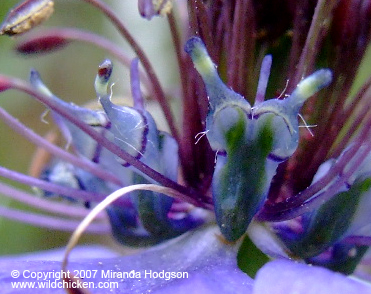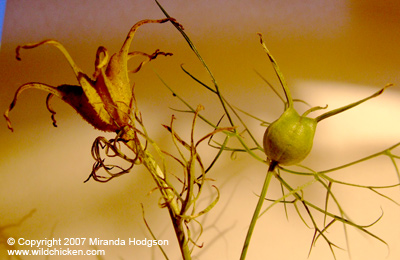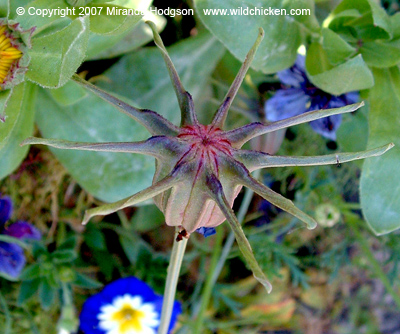


Nigella hispanica petals

Seed pods ofNigella hispanica (l.) and Nigella damascena (r.)
Nigella hispanica (also called Love-in-a-mist and fennel flower. Sometimes called Nigella papillosa, though this is generally just be the uncultivated type).
Nigella
hispanica
Hardy annual grown for richly coloured blue flowers, followed by interesting seed pods, and delicate spidery foliage. The petals have modified to become nectaries, just above the blue sepals (which look like petals), and are worth a look close up to see the delicate banding and colour shading. They are visible in the middle photograph above. The dried seed pods are useful for indoor arrangements.
Nigella hispanica is attractive to beneficial insects such as bees and hoverflies.
Nigella hispanica, as the name suggests, comes from Spain. It is similar to Nigella damascena and the two are easily confused on first glance. The easiest way to tell them apart is by the seed pods, which are quite different. The seed pod of N. damascena is an inflated capsule while N. hispanica's seed pod has more sections and several filaments that rise and twist, like a corkscrew, from the top of the pod.
Blue flowers in summer, seed pods in autumn.
Habit - upright. H: approx 60cm. S: up to 50cm.
Stem - slender, straight, smooth, mid-green.
Leaves - mid-green, deeply and finely dissected and spidery-looking.
Flowers - 5 sepals and generally 5-10 tiny petals at the base of the stamens. Arching stamens and twisting stamen filaments. The fine spidery hair-like growths just below the flower are actually bracts and not leaves.
Seed pods - a sectioned capsule topped by twisting stamen filaments.

Nigella hispanica seed pod
Does best in full sun.
Well-drained/light.
Hardy.
Little needed. Plants can be dead headed to prolong flowering or left to form attractive seed pods.
Generally untroubled by pests or diseases.
By fresh seed, in situ (seedlings dislike disturbance), in autumn or spring. Plants will self-sow on their own.
Garden Plant Information list of plant care info by botanical name